Additional notes (click to expand)
Medicinal
The fresh leaf produces a jelly-like juice that is wonderful for burns, rashes, blisters, insect bites, cracked lips, acne, cold sores, mouth ulcers and areas of cracked skin.
www.plantzafrica.com http://pza.sanbi.org/bulbine-frutescens
link
The roots are less often used (mainly to prevent or treat madness).
Van Wyk, B.E., Van Oudtshoorn, B Gericke, N. (2000). Medicinal Plants of South Africa, Briza Publications. 2nd ed
Early records(Smith,1895) exist for the use of the rhizomes and roots to treat scrofula-a form of tuberculosis affecting the lymph nodes- and the leaf juice as a styptic.
Brendler, T., Eloff J.N., Gurib-Fakim, A.,Philips, L.D. (2010) African Herbal Pharmacopoeia. Association for African Medicinal Plant Standards.
The fresh whole plant, including the roots of B.abyssinica, is used to make a tea, for use by women to treat unspecified ailments, vaginal and bladder problems, infertility, back pain, and cough.
Brendler, T., Eloff J.N., Gurib-Fakim, A.,Philips, L.D. (2010) African Herbal Pharmacopoeia. Association for African Medicinal Plant Standards.
Geographical distribution
- Africa, Southern Africa, Cape Provinces
Bulbine frutescens (L.) Willd.
Family: ASPHODELACEAEGenus: Bulbine
Species: frutescens (L.) Willd.
Common names: Snake Flower; Burn Jelly Plant
Distribution summary: S Africa
Habit: Perennial
Hardiness: H3 - Half hardy; unheated greenhouse/mild winter
Habitat: Sunny, dry, rocky hills
Garden status: Currently grown
Garden location: Arid zones (Q), Southern Hemisphere Wolfson bed (N), Glasshouse (GLASSHOUSE)
Flowering months: May, June, July, August, September, October
Reason for growing: Medicinal
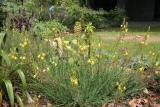
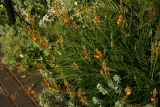

.JPG)
.JPG)
.JPG)
.jpg)
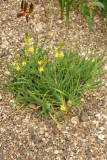
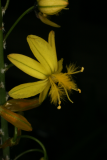
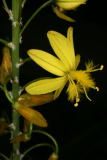


.JPG)
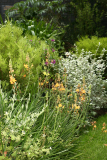
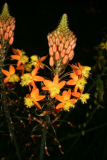
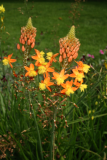
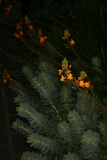
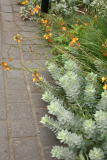
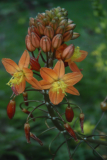
.JPG)
.JPG)

.JPG)